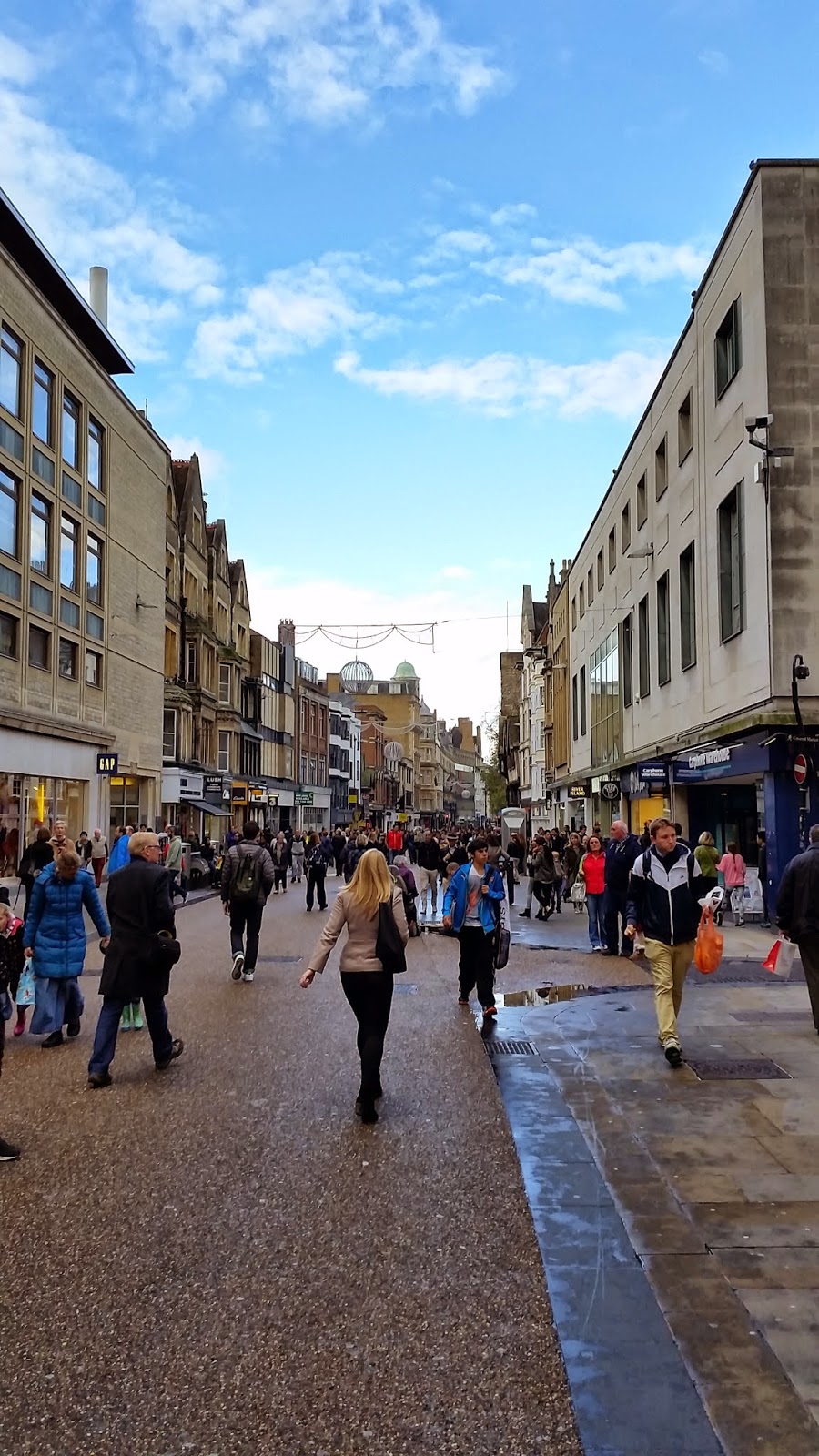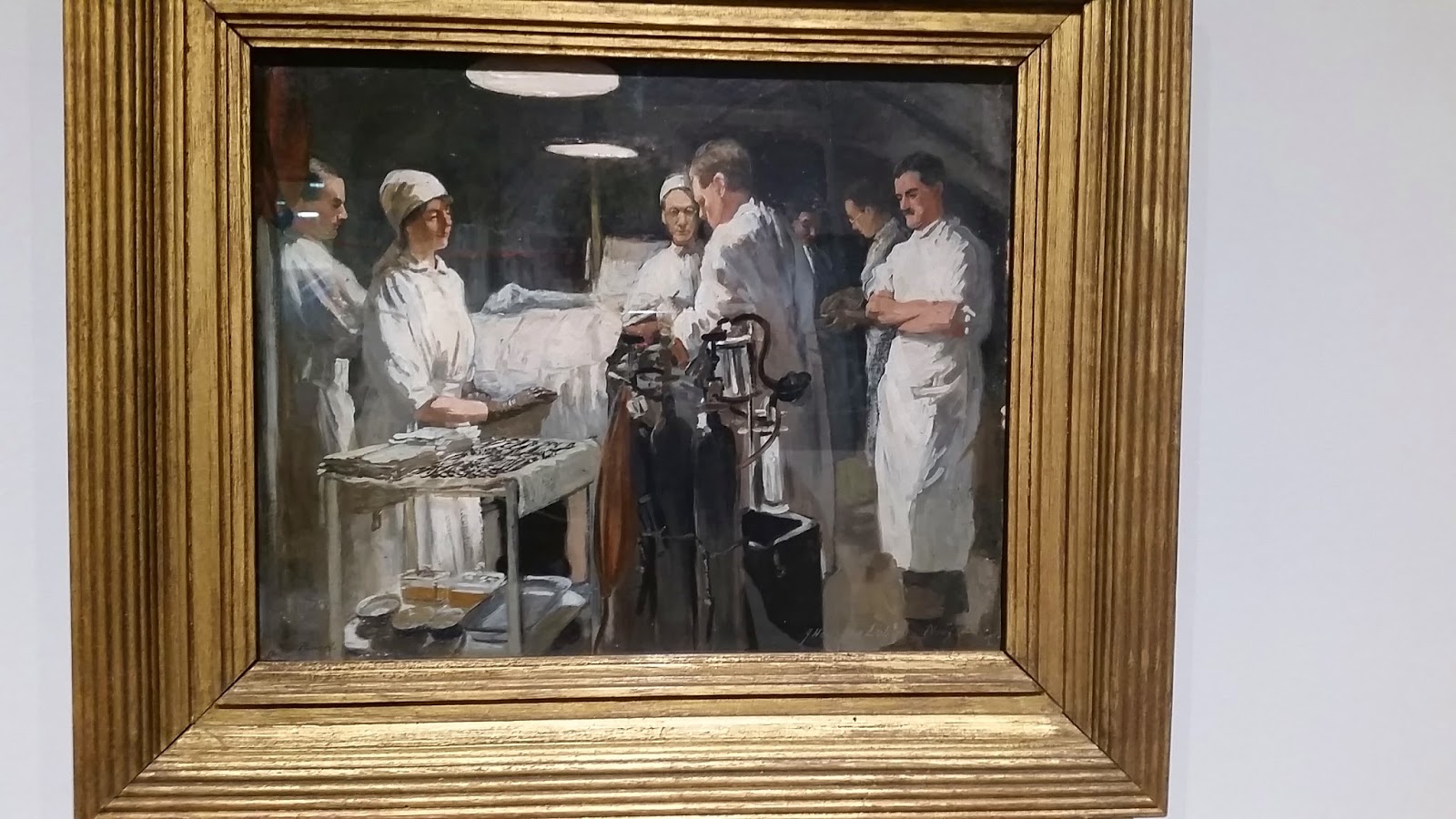A week ago Saturday, Nikki (Rebecca's friend from the Truman Scholarship) called me up and asked if I wanted to go exploring. Of course I did! She told me she had a rough plan to wonder around the Northern Quarter, and we set off.
Our first stop was the central library. It is amazing. It has recently been restored, and they did a beautiful job. The architects added a modern yet warm interior remodel but showed restraint and let the old beauty of the building take center stage. It is essentially a giant dome for the reading room with various libraries around the edge. One of my favorite parts was the music library! They have sheet music for every song you can imagine, and you can check it out and even practice on public electric pianos they have set up throughout the room.
Pretty sunset from the day before.
The Library reading room.
Shakespearean themed stained-glass above the entry.
Nikki admiring the stained-glass.
The next stop was the Manchester Museum of Art, which has a fantastic and very moving exhibit on war. The paintings and photographs were organized by subject instead of by war, which made for an interesting experience. You could make the connections and see the themes that seem to repeat themselves every time. The paintings did an incredible job of capturing the stress, sadness, and horror of conflict. It was interesting to compare to the Imperial War Museum. The War Museum has a gigantic and fascinating collection of artifacts from World War I and II, but was strangely dehumanizing. Instead of seeing the contorted bodies, the anguish of conflict and loss, and the confusing of reintegration that was captured in the paintings at the museum, there were exhibits showing the guns, uniforms, and military vehicles used in the battles. The Imperial War Museum does provide a wealth of historical information, but I was much more moved by the artistic interpretations.
Painting of wartime doctors.
Painting of shell factory.
Imperial War Museum North, designed by architect Daniel Libeskind. It is supposed to represent a globe that has been fractured, each piece highlights a different "element", water (the cafe with the view of the water on the left), earth (the low one on the right with most of the exhibits), and air (the tower on the right). The building was interesting conceptually but I was not very impressed overall. The lobby was extremely commercial and disorienting...it was so bad that I asked the attendant to make sure we had arrived in the museum.
Next we stopped by some cafes and pubs to get coffee and a beer. The Northern Quarter has a great collection of funky cafes tucked into old basements and brick buildings.
Black Dog mosaic in the NQ
Entrance exhibit of the "Art Cafe"
The Art Cafe
Street art in the NQ
We then headed to the east side of the city to the old industrial area where the textile industry flourished during the industrial revolution. One hilarious and awesome plaque at Murray's Mills gave one of the most intense descriptions of a person I've ever heard. It reads as follows:
"To the memory of ADAM MURRAY, who was born at New Galloway in Schotland, MDCCLXVII and died at Rose Hill near Manchester June XXVLMDCCXVIII. In the thirteenth year of his age he was placed with a respectable machine maker at chowbent in this county and very early perceived that the machine called a mule was capable of much improvement in its parts and of most extensive application for the spinning of fine yarn; and, aided solely by his own clear judgment and sound practical knowledge, he completed an establishment for mule spinning in Manchester which bears example testimony to the accuracy of his views and the successful application of his talents. His disposition was naturally mild, benevolent, and generous and all his transactions were strongly marked by manly independence, integrity, and humility."
The world's first suburb.
Entrance to Murray's Mills
Murray's Mills smokestack.
Pond used to cool equipment, connected to the channels where the barges carried in cotton and cloth out.
The humble dedication to Adam.
Now, given that this was a plaque on his factory, I can only wonder if he wrote it himself, but that seems as if it would contradict the humbly boastful statement at the end. Nevertheless, the factory was interesting and it was a hair tingling experience to walk along the very streets that changed the modern world as we know it.
Afterward we stopped by a bar that was in an underground Victorian era public toilet that had been converted. We met up with some friends and headed to the Etihad Stadium to watch a Man City football (read: soccer) game. We had great seats right off the field. The Man City fans fairly disappointing, especially compared to the rowdy Newcastle crowd, but they were probably disappointed that an underdog team was beating them so definitively. Possibly my favorite part of the field was a huge banner that said "Manchester thanks you, Sheikh Manscur". The team was famously bought by a wealth Saudi Sheikh, but I guess he wants to make sure everyone knows about it. Afterward we walked home and met up with more friends for a fun night out.
Toilet bar.
We thank the Sheikh!
Rowdy fans vs boring fans.





































